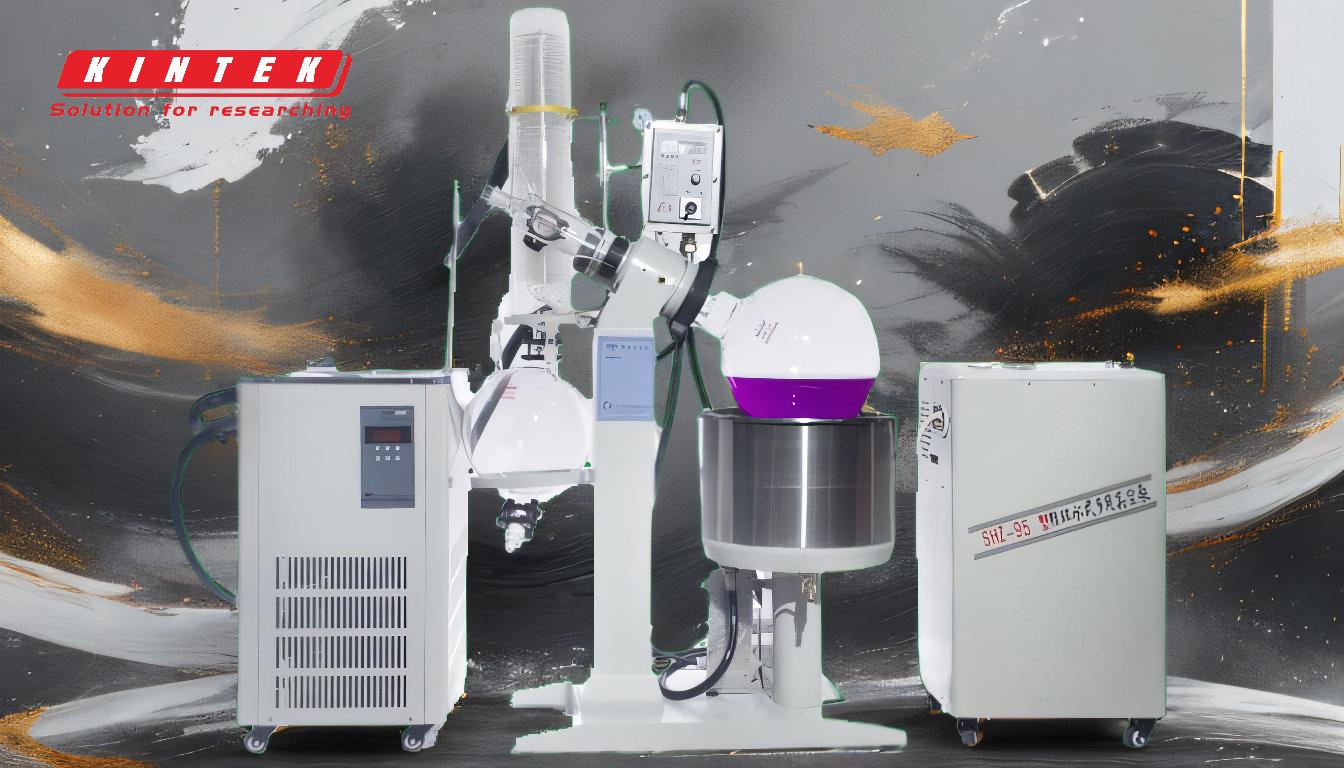A rotary evaporator spins to enhance the efficiency of solvent removal through evaporation. The rotation of the flask increases the surface area of the liquid, allowing for faster evaporation. This is achieved by creating a thin film of liquid on the inner walls of the flask, which is exposed to the vacuum and heat, facilitating rapid evaporation. Additionally, the spinning motion helps prevent bumping and foaming, ensuring a smooth and controlled evaporation process. The combination of rotation, vacuum, and heat makes the rotary evaporator an essential tool for concentrating non-volatile components and recovering solvents in various laboratory and industrial applications.
Key Points Explained:

-
Increased Surface Area for Evaporation:
- The primary reason a rotary evaporator spins is to increase the surface area of the liquid inside the flask. By rotating the flask, the liquid spreads out into a thin film along the inner walls of the flask. This thin film has a much larger surface area compared to a stationary liquid, which significantly enhances the rate of evaporation.
- The increased surface area allows more of the liquid to be exposed to the vacuum and heat, facilitating quicker and more efficient evaporation of the solvent.
-
Prevention of Bumping and Foaming:
- Bumping and foaming are common issues during the evaporation process, especially when dealing with volatile solvents. Bumping occurs when large bubbles form and burst violently, potentially causing the liquid to splash out of the flask. Foaming, on the other hand, can lead to the loss of sample and contamination of the condenser.
- The continuous and constant rotation of the flask helps to minimize these issues. The centrifugal force created by the spinning motion keeps the liquid evenly distributed along the walls of the flask, reducing the likelihood of large bubbles forming and preventing foaming.
-
Enhanced Evaporation Efficiency:
- The combination of rotation, vacuum, and heat in a rotary evaporator creates an optimal environment for efficient solvent removal. The vacuum lowers the boiling point of the solvent, allowing it to evaporate at a lower temperature, which is particularly important for heat-sensitive compounds.
- The rotation ensures that the liquid is constantly moving and being exposed to the heat source, which further accelerates the evaporation process. This makes the rotary evaporator particularly useful for concentrating non-volatile components and recovering solvents in a controlled manner.
-
Centrifugal Force and Liquid Distribution:
- The spinning motion of the flask generates centrifugal force, which pushes the liquid outward against the walls of the flask. This force ensures that the liquid forms a thin, even layer on the inner surface of the flask, maximizing the surface area available for evaporation.
- The centrifugal force also helps to keep the liquid in place, preventing it from pooling at the bottom of the flask where it would have less exposure to the heat and vacuum. This uniform distribution of the liquid is crucial for achieving consistent and efficient evaporation.
-
Versatility and Applications:
- The rotary evaporator is a versatile piece of equipment used in various fields, including chemistry, biology, pharmaceuticals, and food science. Its ability to gently and efficiently remove solvents makes it ideal for processes such as concentration, crystallization, drying, separation, and solvent recovery.
- The spinning mechanism is key to its versatility, as it allows the rotary evaporator to handle a wide range of solvents and compounds, including those that are heat-sensitive or prone to bumping and foaming.
In summary, the spinning action of a rotary evaporator is essential for increasing the surface area of the liquid, preventing bumping and foaming, and enhancing the overall efficiency of the evaporation process. This makes the rotary evaporator an indispensable tool in laboratories and industries where precise and controlled solvent removal is required.
Summary Table:
| Key Benefit | Explanation |
|---|---|
| Increased Surface Area | Spinning creates a thin film, maximizing liquid exposure to heat and vacuum. |
| Prevents Bumping and Foaming | Rotation ensures even liquid distribution, reducing bubble formation. |
| Enhanced Evaporation Efficiency | Combines rotation, vacuum, and heat for faster, controlled solvent removal. |
| Centrifugal Force | Ensures uniform liquid distribution for consistent evaporation. |
| Versatility | Ideal for concentration, crystallization, drying, and solvent recovery. |
Discover how a rotary evaporator can optimize your lab processes—contact us today!











